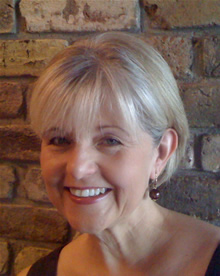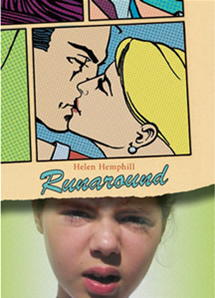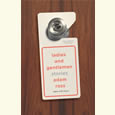Starting Over
Why Helen Hemphill gave up a successful career in business to write novels for children
Anyone who’s ever dreamed of giving up a successful but unfulfilling career to become a full-time writer will love Helen Hemphill’s story. Twelve years ago, the Texas-born, Nashville-based novelist was doing PR for the finance industry—about as far from the bright colors and characters of the children’s-book section as it’s possible to get. Then, after more than two decades, Hemphill walked away: “It was glitzy and glamorous in a crazy way, but it wasn’t me,” she says. “I always felt like I was being someone else.” The gamble paid off: Hemphill swiftly established herself as a strong new voice in children’s literature. In the past four years alone, she’s published three novels for young readers (“middle-grade” books, as the industry pegs them), and all of them have racked up accolades and starred reviews. Her second title, Runaround, has just been released in paperback.
Hemphill’s path toward publishing began when she decided to complete a master’s degree in English literature at Belmont University, after which she landed an internship with a sixth-grade teacher at the Oak Hill School, a private elementary school in Nashville. She warmed quickly to the classroom, and ended up teaching sixth grade at Oak Hill for four years: “Teaching felt more genuine to my purpose,” she says. She was in her mid-40s, and one of her sisters—always the journal-keeper among the seven siblings—urged her to write about the surprising sea change her life was undergoing.
 Hemphill took up the challenge. She began writing and sending out her first stories, some of which plumbed her Texas childhood for inspiration. Rejections—albeit encouraging ones—followed, but Hemphill wasn’t cowed; instead, she got more serious about pursuing writing as a vocation rather than a hobby: “Once I make up my mind to do something, I’m fairly goal-driven,” she says. “And I knew I had to step it up pretty far if I wanted to do it as a profession.” At a conference of the Society of Children’s Book Writers and Illustrators, she met a professor from Vermont College of Fine Art’s low-residency graduate program in writing for children and young adults, who suggested she try a semester to see if she liked it well enough to pursue a master of fine arts degree there.
Hemphill took up the challenge. She began writing and sending out her first stories, some of which plumbed her Texas childhood for inspiration. Rejections—albeit encouraging ones—followed, but Hemphill wasn’t cowed; instead, she got more serious about pursuing writing as a vocation rather than a hobby: “Once I make up my mind to do something, I’m fairly goal-driven,” she says. “And I knew I had to step it up pretty far if I wanted to do it as a profession.” At a conference of the Society of Children’s Book Writers and Illustrators, she met a professor from Vermont College of Fine Art’s low-residency graduate program in writing for children and young adults, who suggested she try a semester to see if she liked it well enough to pursue a master of fine arts degree there.
Hemphill agreed; “It was shortly after 9/11, and I was feeling the collective depression of the world. It made me feel that I needed to do this now. If not now, when?” She soon realized that she could grow tremendously as a writer if she stuck with the program. “And I began to see that if I simply became a better writer, I would be happy. It wasn’t about publishing anymore.” The process was, she says, “very important to my spiritual growth, my growth as a creative voice in the world.”
By her final semester, Hemphill began again to submit work for publication—and racked up more rejections. Her thesis project was an early draft of Runaround, a novel that ultimately went through nearly 30 different versions. Eventually she threw the whole thing out: “The book didn’t work, and I couldn’t figure out why. I figured its purpose was to teach me how to write.”
“It was shortly after 9/11, and I was feeling the collective depression of the world. It made me feel that I needed to do this now. If not now, when? … And I began to see that if I simply became a better writer, I would be happy. It wasn’t about publishing anymore.”
But Hemphill struck gold with another project she began at Vermont, the story that became her first published novel, Long Gone Daddy. That book took only six months to write and sell—to Front Street, which has published all of Hemphill’s work to date—and it appeared to a chorus of glowing reviews. The novel is narrated by Harlan Q, an irreverent and agnostic 14-year-old boy who sets off an unlikely road trip with his estranged father, a hellfire-and-damnation kind of preacher. The two must deliver Harlan’s late grandfather’s body to his requested burial ground—Las Vegas. Critics praised Harlan’s sharp, funny voice, and the way Hemphill cleverly nodded to plot points and themes from William Faulkner’s As I Lay Dying and Flannery O’Connor’s Wise Blood.
“Hemphill strikes a confident balance between deep heartache and sharply irreverent humor,” a Booklist reviewer wrote, and Publishers Weekly applauded the novel’s “laugh-out-loud scenes, a marvelous narrative voice, period details and appealingly quirky characterization.”
After that, Hemphill returned to the territory of Runaround. In its new incarnation, the book had the same setting—Falls of Rough, Kentucky, a real town where Hemphill’s mother grew up—but this time with a new focus. The story isn’t really about a romance, Hemphill decided, but about the testy relationship between the main character, an 11-year-old tomboy named Sassy (who lives up to her name) and her pretty older sister, Lula. Sassy isn’t the sweet, spunky child she was in previous drafts, the kind of kid who’s a dime a dozen in many middle-grade books. Instead, she has a hot temper and a smart mouth, a child who “doesn’t suffer fools easily”—more like the author herself, Hemphill notes: “I was the baby of seven, and I could get away with a lot. I pushed my sister off the deck of our houseboat once.”
“I think we all want to find a place—whether it’s geographical or intellectual—where we can be accepted, where we can be around people who understand and love us.”
Hemphill says Runaround does borrow from her own childhood experiences, especially her quarrels with her sisters and the pressure they all felt to have boyfriends. In the end, it’s a simple story about the various natures of loves, the enduring love of a family versus the mythology of romantic love. “The reality is that my sisters and I were—and are—very close and supportive of each other, even though we’ve fought a lot,” she notes.
Neither Long Gone Daddy nor The Adventurous Deeds of Deadwood Jones, Hemphill’s most recent book (published in 2008), is as closely linked to the writer’s own life story or experiences, at least at first glance. Both are narrated by boys, and both feature predominantly male casts of characters. Long Gone Daddy was inspired by a true tale Hemphill heard from a friend, and Deadwood Jones evolved from Hemphill’s fascination with both the mythical, mystical West and the autobiography of Nat Love, a freed slave who became a celebrated cowboy. The story follows narrator Prometheus Jones, a young and talented cowboy loosely modeled after Love. Jones, whose mother has recently died, joins a cattle drive with a secret quest of his own: to find the father he’s never known.
While writing Long Gone Daddy, Hemphill worked assiduously to ensure that the characters’ voices were authentically male. (“Men don’t go on and on with emotion and explanation like women do,” she notes.) She created a spreadsheet in which she tracked the characters by chapter, checking to make sure each character’s language was both idiosyncratic and believably gender appropriate. An online tool, the “Gender Genie,” helped. After that process, Hemphill trusted her instincts more with Deadwood Jones, but she also had to pore over narratives and Library of Congress images of the time period in order to nail the details and vernacular of the turn-of-the-century West. “I hadn’t ridden a horse since I was 16. I was really starting at ground zero to figure out what happens on a cattle drive, what cowboys ate and said and wore, their tools, everything.” She also faced the formidable challenge of writing across race. “My editor wasn’t sure about it, but he liked the final product a lot,” she says.
 Long Gone Daddy‘s Harlan, Deadwood Jones‘ Prometheus, and Runaround‘s Sassy are hardly characters you’d expect to find palling around with each other on the playground. Their diversity is a testament to Hemphill’s narrative skills and storytelling ambition. But the novels share a notable lack of nuclear families: mothers are absent in both Runaround and Long Gone Daddy; in Deadwood Jones, both parents are out of the picture. Hemphill says this narrative tendency may be traced back to her own upbringing: while she grew up in an intact home, her parents were not happily married, which led to some “fairly dysfunctional moments” for the family. In her fiction, that background comes out not just as the absence of parents, but in characters who possess a longing for a home, for support. “Each one is looking for a place in the world,” she says. “I think we all want to find a place—whether it’s geographical or intellectual—where we can be accepted, where we can be around people who understand and love us.”
Long Gone Daddy‘s Harlan, Deadwood Jones‘ Prometheus, and Runaround‘s Sassy are hardly characters you’d expect to find palling around with each other on the playground. Their diversity is a testament to Hemphill’s narrative skills and storytelling ambition. But the novels share a notable lack of nuclear families: mothers are absent in both Runaround and Long Gone Daddy; in Deadwood Jones, both parents are out of the picture. Hemphill says this narrative tendency may be traced back to her own upbringing: while she grew up in an intact home, her parents were not happily married, which led to some “fairly dysfunctional moments” for the family. In her fiction, that background comes out not just as the absence of parents, but in characters who possess a longing for a home, for support. “Each one is looking for a place in the world,” she says. “I think we all want to find a place—whether it’s geographical or intellectual—where we can be accepted, where we can be around people who understand and love us.”
It’s the sort of search that Hemphill may be thinking about on a personal level, as well. Until recently, she and her husband, Neil Hemphill, a health-care executive who also serves on the Humanities Tennessee Board of Directors, divided time each month between Austin and Nashville, their most-of-the-year home of fifteen years. (They have two grown sons, ages 32 and 24.) Recently, they decided to give up the Texas condo, as well as their home in the Forest Hills suburb of Nashville, and start a new phase of life as full-time, downtown Music City residents. Hemphill says she’ll most acutely miss her tight-knit writing community of Austin. But, she notes, “It’s nice to have your roots in one place.”


